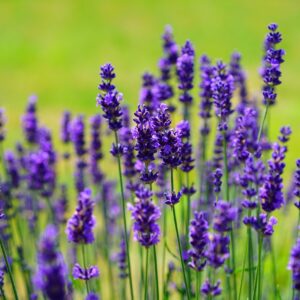Are you looking for a simple and effective way to improve the health of your garden? Look no further than mulching.
Mulching not only provides numerous benefits to your plants, but it is also an easy and cost-effective gardening practice that anyone can do. By applying a layer of organic material such as straw, wood chips, or leaves to the surface of your soil, you can reap a multitude of rewards.
First and foremost, mulching helps to retain moisture in the soil. This means less watering for you, saving you time and money.
Additionally, mulch acts as a natural barrier, suppressing weed growth and reducing the need for herbicides. By regulating the soil temperature, mulching protects your plants from extreme heat or cold, ensuring optimal growth.
Furthermore, as the mulch breaks down, it adds valuable nutrients to the soil, improving its fertility.
Lastly, mulching prevents soil erosion, keeping your precious topsoil in place. With so many benefits, it’s clear that mulching is a must for any gardener.
In this article, we will guide you on how to mulch properly to reap these benefits and achieve a thriving and beautiful garden. So let’s get started and learn how to do it right.
Retaining Moisture in the Soil
Mulching is a game-changer when it comes to retaining moisture in the soil, allowing your plants to thrive and giving you more time to relax and enjoy your garden. By applying a layer of mulch around your plants, you create a barrier that helps prevent water evaporation, keeping the soil moist for longer periods.
This is especially beneficial during hot summer months or in dry climates where water conservation is crucial. Additionally, mulch helps regulate soil temperature, keeping it cool in the summer and warm in the winter. Not only does this promote optimal plant growth, but it also reduces the stress on your plants caused by extreme temperature fluctuations.
With the right mulching techniques, you can ensure that your soil retains the moisture it needs for healthy plant development, all while minimizing your watering efforts.
So grab a bag of mulch and get started on creating a water-saving oasis in your garden.
Suppressing Weed Growth
To keep those pesky weeds from taking over your garden, simply spread a layer of mulch over the soil. Mulching is a fantastic way to suppress weed growth and maintain a tidy garden. The mulch acts as a barrier, preventing sunlight from reaching weed seeds and stopping them from sprouting. It also restricts the amount of nutrients and water available to weed roots, making it difficult for them to survive.
By mulching your garden, you can significantly reduce the time and effort spent on weeding. To effectively suppress weed growth, make sure to apply a layer of mulch that’s at least 2-3 inches thick. This thickness will provide adequate coverage and smother any existing weeds, giving your plants the best chance to thrive.
Regulating Soil Temperature
Regulating soil temperature can be achieved by applying a layer of mulch, which helps to insulate the soil and protect it from extreme temperature fluctuations. Mulch acts as a barrier, preventing the soil from becoming too hot during scorching summer days and too cold during freezing winter nights.
By maintaining a more stable temperature, mulching creates an ideal environment for plant growth. In hot climates, mulch keeps the soil cooler, reducing water evaporation and conserving moisture. In colder regions, mulch acts as a blanket, keeping the soil warmer and protecting roots from frost damage.
To regulate soil temperature effectively, choose a suitable mulch material like straw, wood chips, or compost that can be spread evenly around plants. Remember to replenish the mulch layer regularly to keep reaping the benefits.
Improving Soil Fertility
Enhance the fertility of your soil by incorporating organic matter and nutrient-rich amendments. Mulching is a great way to achieve this.
By applying a layer of mulch to your soil, you can improve its fertility in several ways. First, the mulch acts as a protective barrier, preventing erosion and retaining moisture. This helps to create a favorable environment for beneficial organisms like earthworms and microorganisms, which break down organic matter and release nutrients into the soil. Additionally, as the mulch breaks down over time, it adds organic matter to the soil, further enriching it with nutrients.
To maximize the benefits of mulching, choose organic materials like compost, straw, or shredded leaves. Apply a layer of mulch around 2-4 inches thick, making sure to leave a small gap around the base of plants to prevent rot.
With proper mulching, you can improve the fertility of your soil and promote healthy plant growth.
Preventing Soil Erosion
Preventing soil erosion is crucial for maintaining the health and fertility of your soil. When soil erosion occurs, valuable topsoil gets washed away, taking with it essential nutrients that plants need to grow.
To prevent this, mulching is a highly effective method. By applying a layer of organic mulch, such as wood chips or straw, on the soil surface, you create a protective barrier that helps reduce water runoff and soil erosion. The mulch also acts as a shield against the impact of heavy rains, preventing soil particles from being dislodged and carried away.

Additionally, mulching promotes the growth of beneficial microorganisms and improves soil structure, further preventing erosion. So, make sure to mulch your garden beds and protect your soil from erosion to ensure its long-term health and productivity.
Conclusion
So now you know the benefits of mulching and how to do it right. By mulching, you can retain moisture in the soil, suppress weed growth, regulate soil temperature, improve soil fertility, and prevent soil erosion.
Remember to choose the right type and thickness of mulch for your specific garden needs. With a little effort, you can enjoy a healthier and more productive garden. So go ahead, grab some mulch and start reaping the benefits today!





